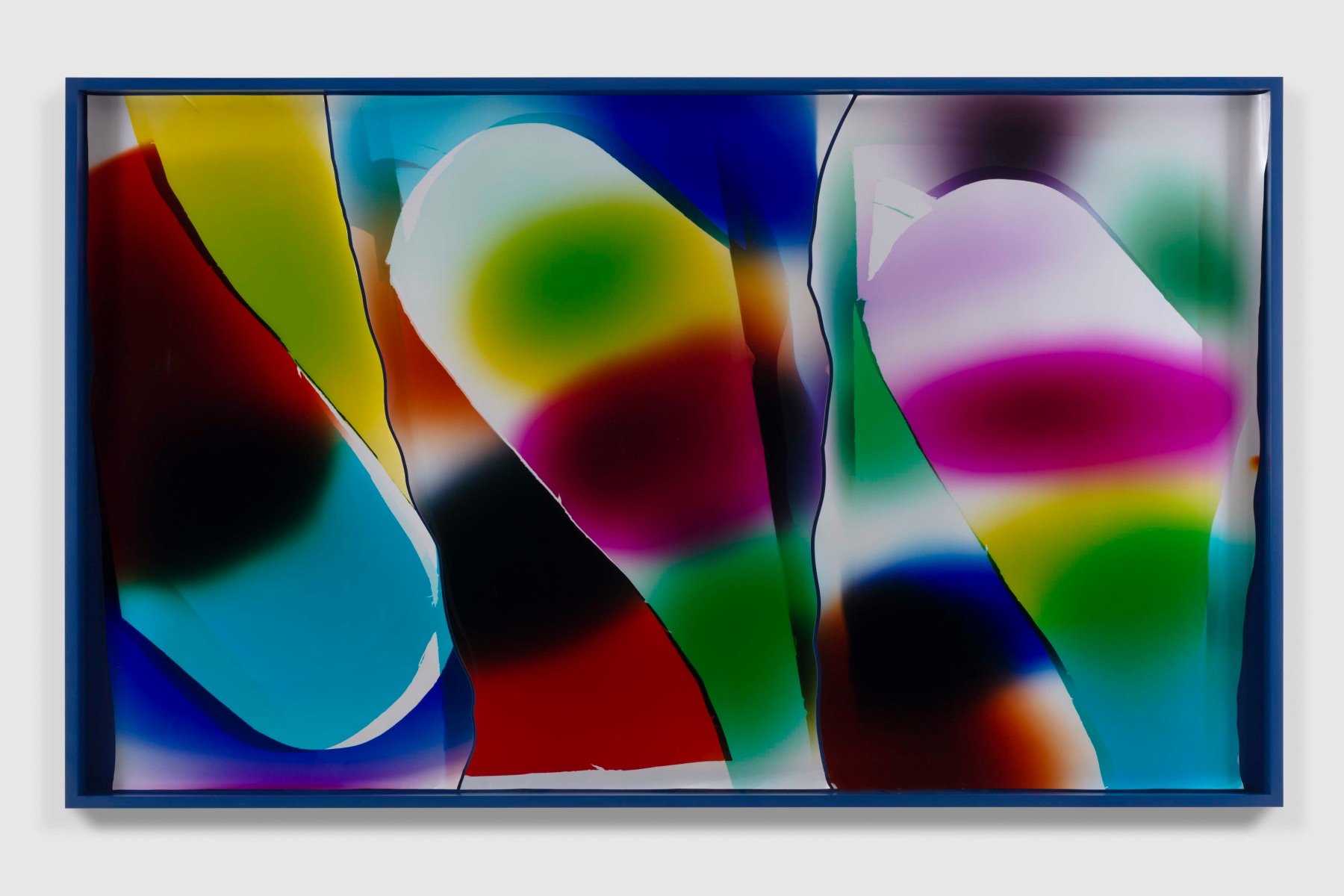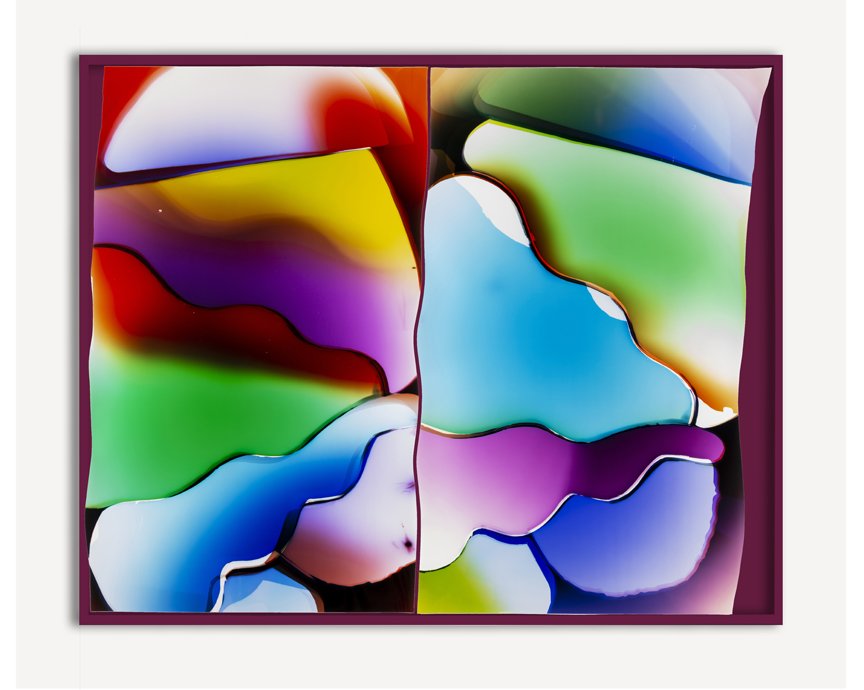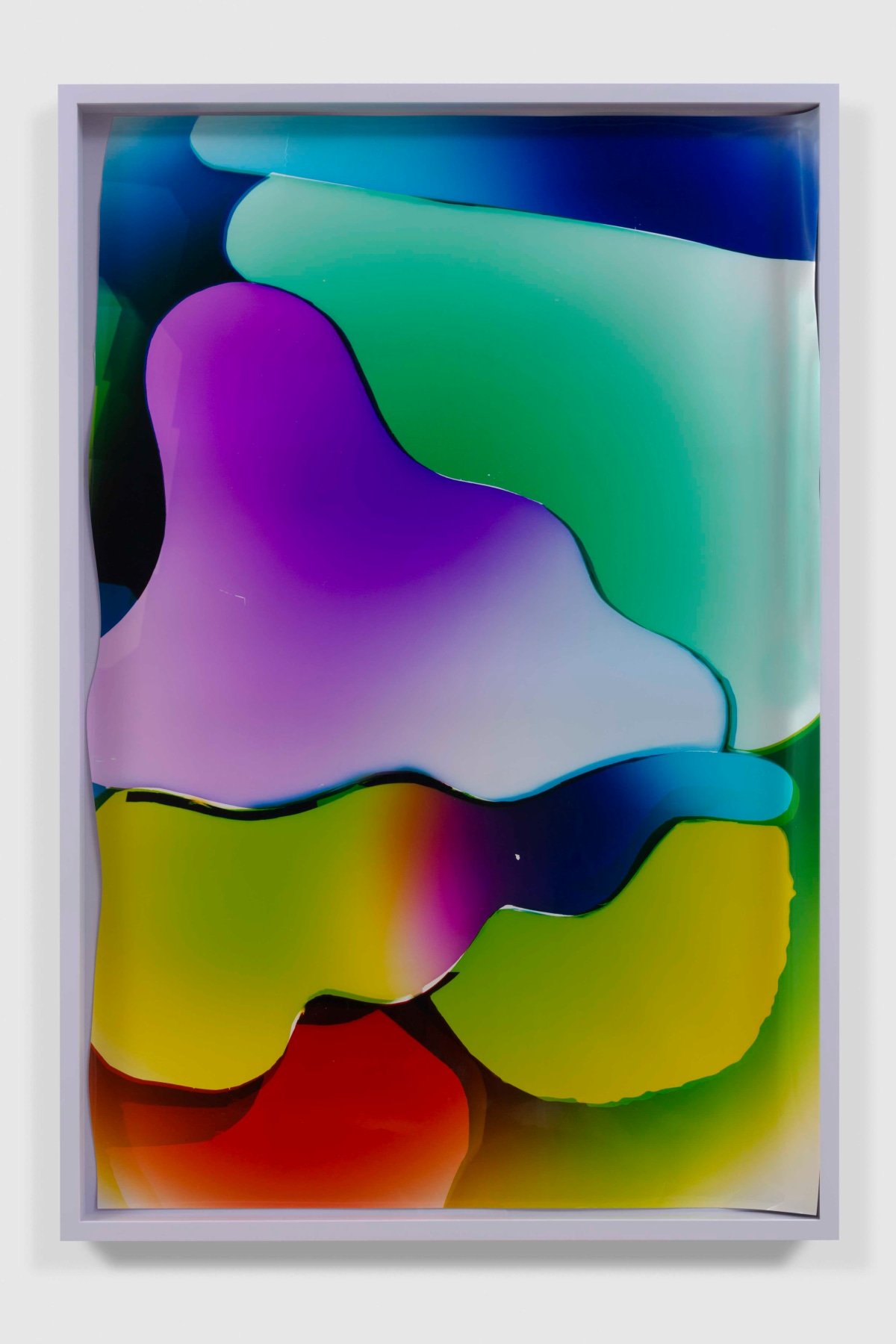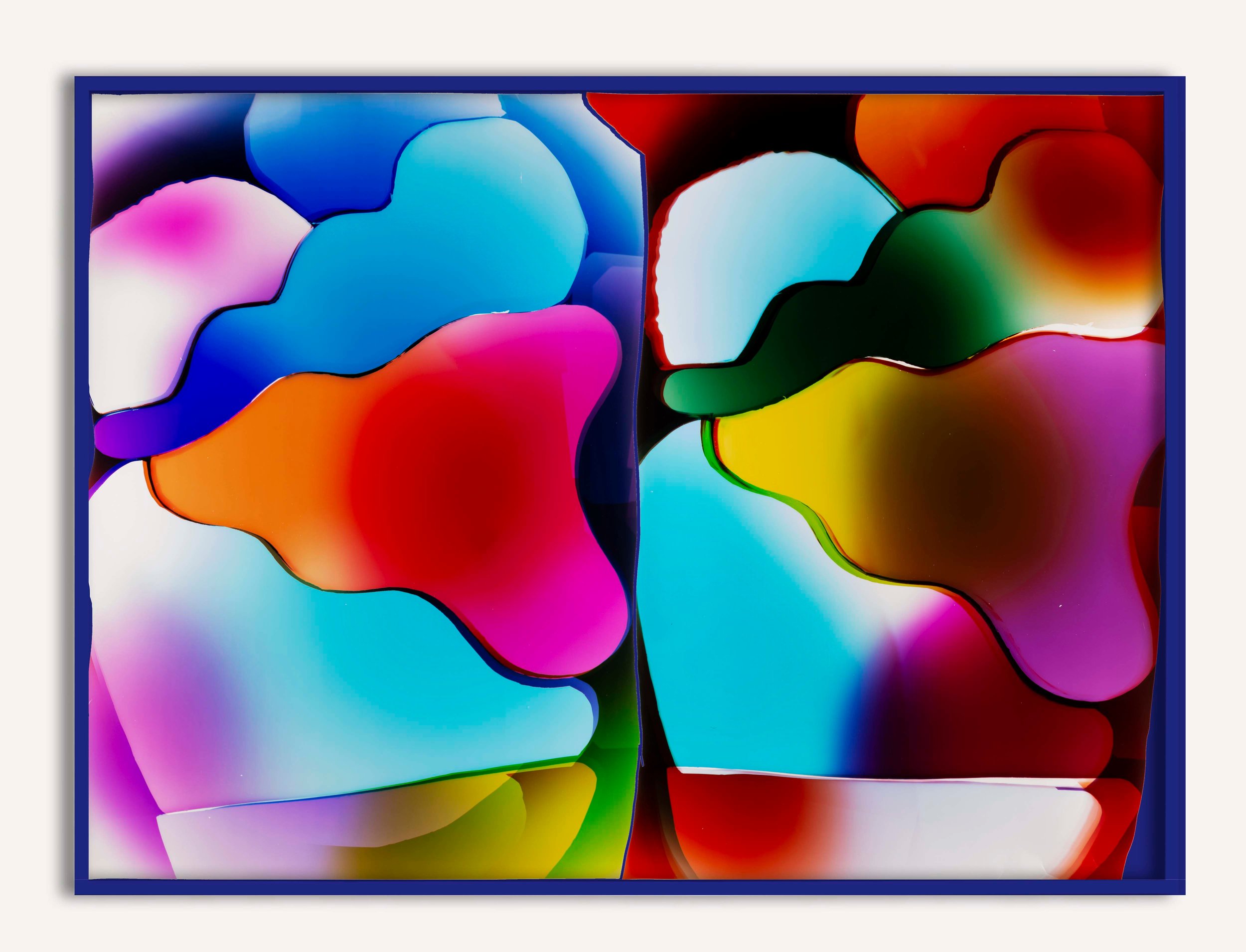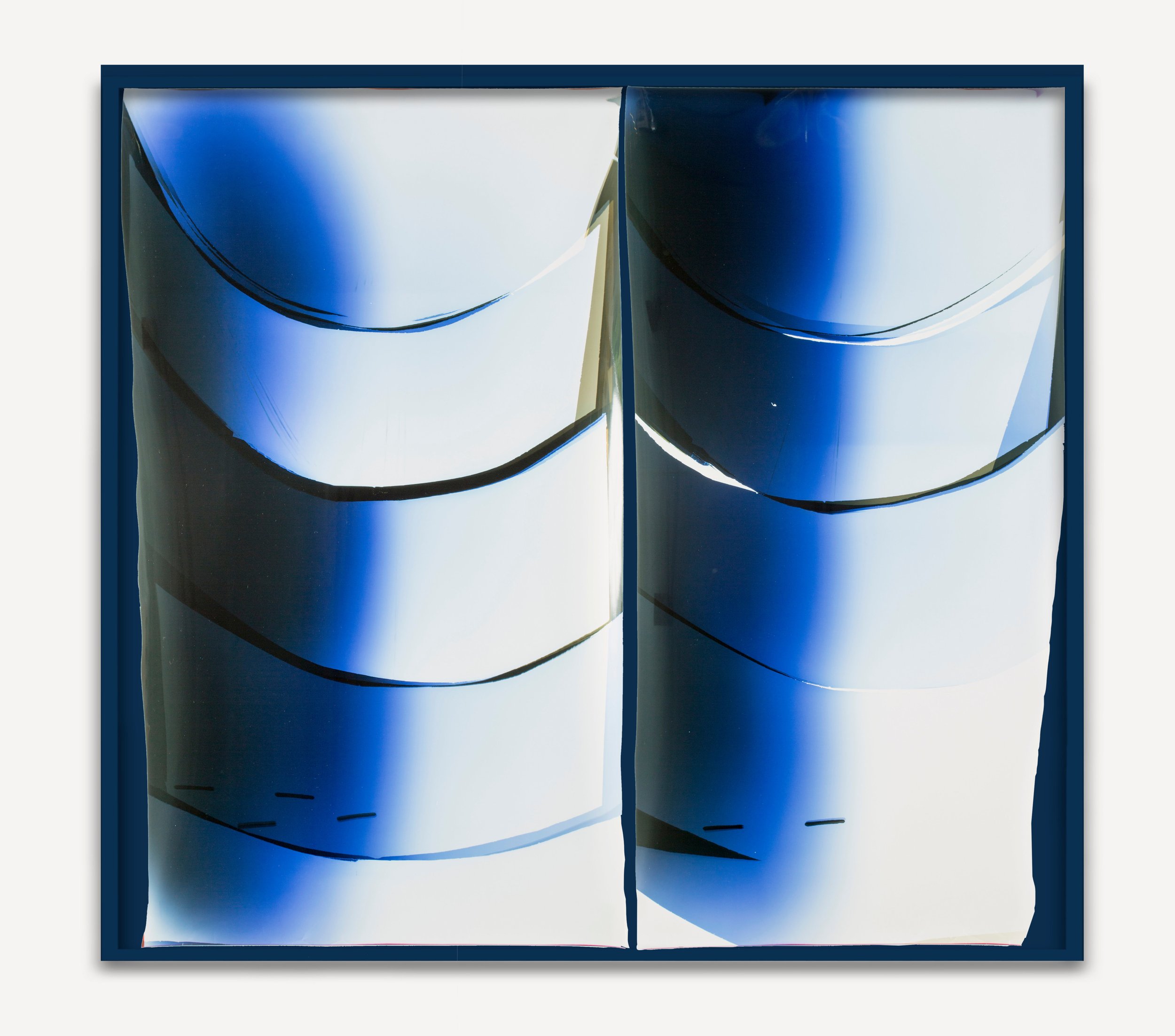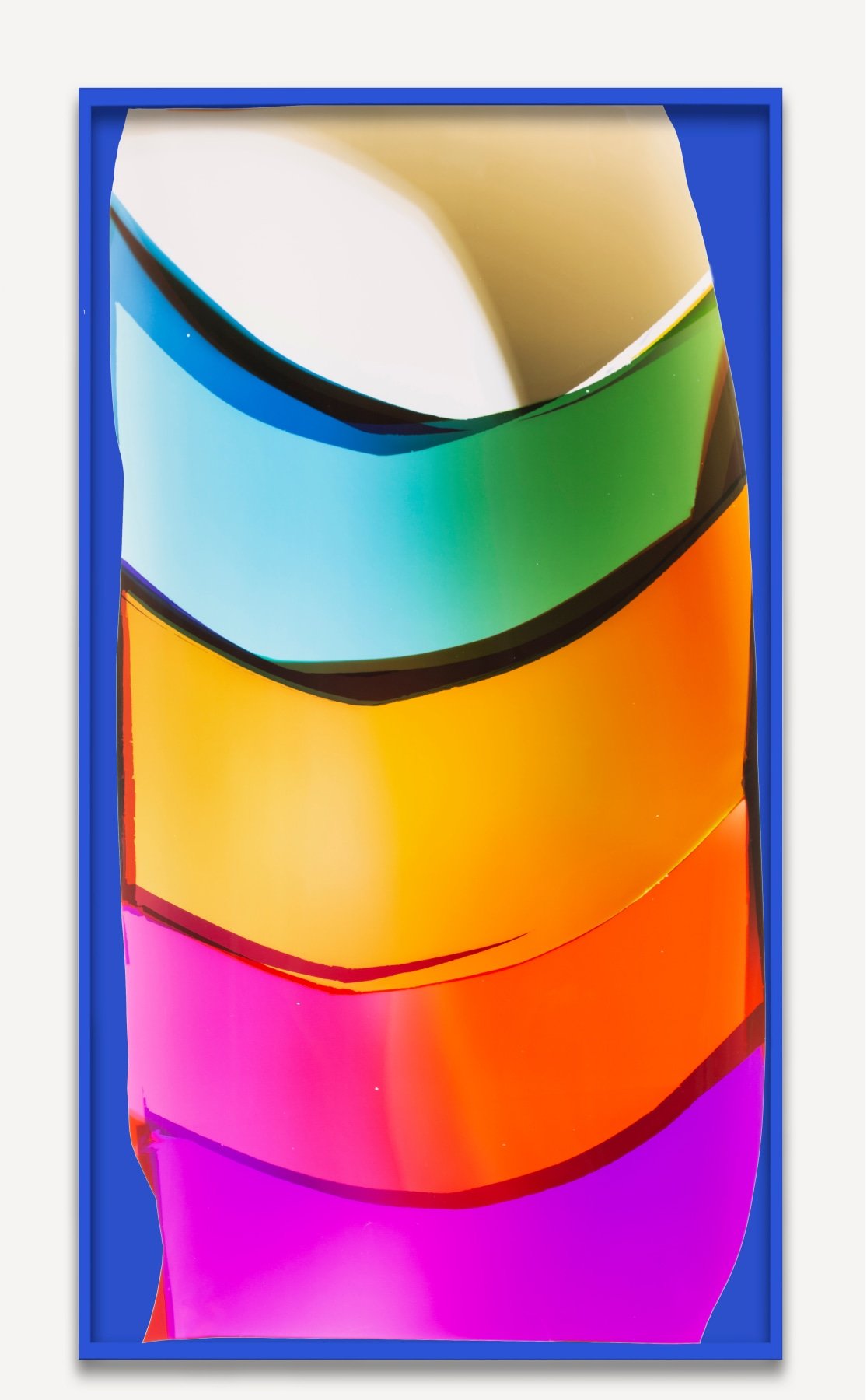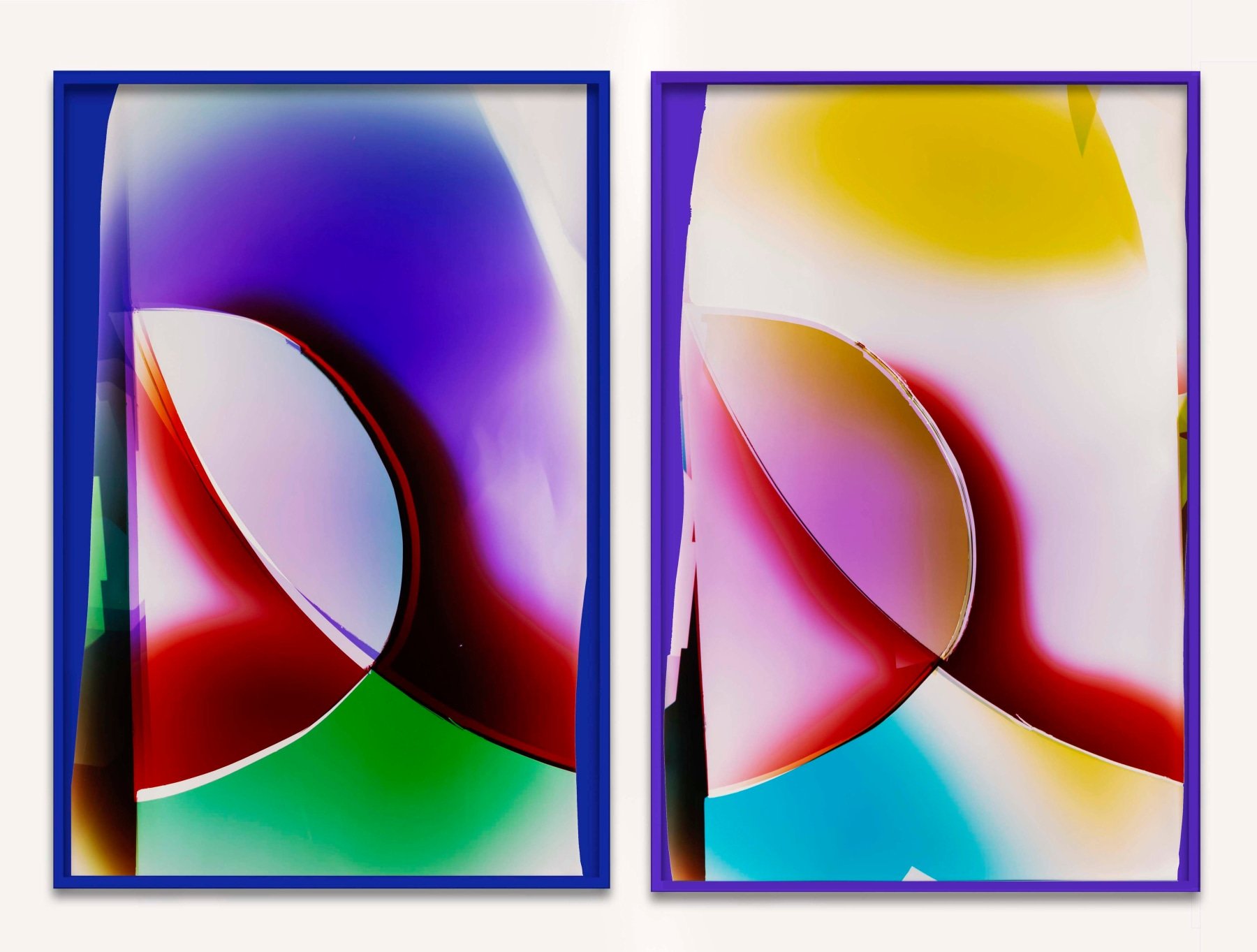These photograms are part of a
group that more explicitly focuses on the
element of the performance of making art.
Like other photograms they employ
several basic elements of the darkroom
or photography practice as I have
distilled them:
the photo paper,
the processor, where development happens
the enlarger ie., controlled light source,
the color filters intended for a balancing
a negative,some kind of object to place on the paper,
and the key element: "ego of the maker"
I have given myself, the maker, an assignment to do a set of actions, ie, filter settings and arrangement of cardboard, some hand waving, etc. and then to replicate it exactly again. Each area of color represents a short exposure of time, for example 2 seconds of enlarger light with filters set at M30 Y130 makes yellow. So imagine a set of instructions to be memorized and performed in total darkness.
Let’s say I perform the actions and then run the paper through the processor and it comes out a few minutes later. The whole experience is fresh, and I’m maybe underwhelmed by the results and I think oh, I can do better. The darkroom is rented by the hour, so I go back in right away and try to get a better result. But then the next one is worse and the next worse, so you keep experimenting and violating the directive to mechanical reproduce the last one. But as they are marks of time, can they ever really be identical as they all represent different points on the linear timeline.
Note: I’m using ego here to mean something like “the agent of action in the physical world,” or the will.
Also note: All these pieces are cut off the roll in sequence, like if a roll of paper towels didn’t have the perforations and you had to hack off each piece with a razor. They fit back together like broken heart best friend lockets.
After some time passes, a more circumspect mature voice chooses the groupings that get framed.
This project was shown at Van Doren Waxter Gallery, New York, NY in September 2020 and M+B Gallery, Los Angeles, CA in January 2021. Both shows were titled “Repetition and Difference.” This was accurate because they were two installments of the same body of work, but I enjoyed the literalness and absurdity of titling them so. This is the first time I have used the titles of shows to speak to each other in the metalayer of my CV.
The titling is done in awareness of Gilles Deleuze’s masterwork of 1967 “Difference and Repetition.” As yet, I am still uncertain if his project and mine have anything in common.
125 126, 2020
Unique C-Print
65 x 50 inches
(158 x 127 cm)
Mariah Robertson, photography, art
154, 2020
Unique C-Print
50 x 32 inches
(127 x 81 cm)
Mariah Robertson, photography, art
118, 2020
Unique C-Print
50 x 30 inches
(127 x 76 cm)
Mariah Robertson, photography, art

